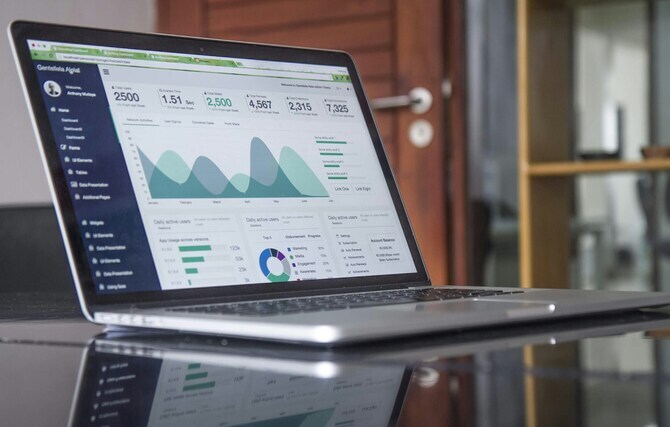Web Traffic Terms Every PR Professional Should Know
Web traffic terms can feel like a whole other language, especially if you’re a PR pro who has mastered the art of communication but is a little bit daunted by the digital side of things.
We live in a digital-first era, though. Understanding the basics of web traffic is helpful, and may even be essential if you want to make sure your messages hit home.
Every click, share, and view online is like a nod from your audience, telling you what works and what doesn’t. Getting to know these terms will help you tune in to what your audience is really interested in, so you can improve your strategies and targeting.
We provide a glossary of web traffic terms below. This should empower you with just enough insider knowledge to bridge the gap between traditional PR smarts and digital savvy. Learn these and you’ll be able to speak the language or your digital specialists, and find new ways to amplify your work.
Understanding Web Traffic
When you look into your website analytics, you’re essentially peeking into the habits and preferences of your audience. Understanding where the traffic comes from, how it’s measured, and what metrics are important will help you tailor your PR strategies.

Tools like Google Analytics, when installed on your website, will measure web traffic and provide the data you need.
Terms You Should Know
Most analytics tools provide some version of the following metrics.
Traffic Sources
You want to understand how viewers find your website. Broadly speaking, traffic can be divided into:
- Direct traffic: Visitors who arrive by typing your URL directly into their browser.
- Search traffic: Users who land on your site via search engines.
- Referral traffic: Those who clicked on a link from another site to get to yours.
- Social traffic: Visitors coming from social media platforms.
Measuring traffic from these sources can give you insights about the strength of your brand, the effectiveness of your search-engine optimization (SEO), the impact of your partnerships, and your social media presence.
Unique Visitors
Unique visitors are distinct individuals who visit your site during a given period, regardless of how often they visit. You can measure unique visitors by day, by week, by month, by quarter, by year, or any custom time period you set.
Visits (or Sessions)
Visits refers to the number of times your site is visited, not accounting for the number of individual visitors. A visitor who comes every day will only be counted once as a unique visitor, but each of their visits will count.
Page Views
Page views refer to the total number of pages viewed on your site. This can provide insights into which content captures attention and keeps users engaged.
Bounce Rate
The bounce rate is the percentage of visitors who navigate away after viewing only one page. A lower bounce rate indicates that your content is relevant and has encouraged further exploration of your website.
Average Session Duration
Average session duration measures the duration of a typical visit, suggesting how engaged the user has been. More time spent can mean that your audience finds the content valuable.
Click-Through Rate
The click-through rate (CTR) reflects the proportion of users who click on a specific link to the total number of users who view a page, email, or advertisement. CTR is critical for evaluating the performance of online ads and email campaigns.
Conversion Rate
Conversion rate measures the percentage of visitors who take a desired action, such as subscribing to a newsletter or making a purchase. It is a key indicator of your website’s effectiveness in prompting user actions.
Cost Per Click (CPC)
Cost per click (CPC) is the cost incurred for each click on a paid advertising link. Managing CPC efficiently ensures you are receiving value from your advertising budget.
Search Engine Optimization
SEO enhances your website’s visibility in search engine results by providing content that search engine crawlers can clearly understand and that effectively addresses searchers’ intent. Done well, it can greatly improve your organic traffic.
Keywords
Keywords are the words and phrases that users type into search engines. They are an important part of SEO. Each page you publish should unambiguously target a specific keyword.
Impressions
An impression occurs each time an ad or piece of content appears in front of a user. These numbers will tell you the reach of your PR campaigns, and are particularly important for awareness campaigns.
Social Media Metrics
Social media metrics are a subset of web metrics specifically tailored to evaluate your performance on social media platforms.

Engagement Rate
The engagement rate is the level of interaction users have with your content through likes, shares, comments, and more. It’s typically calculated by dividing the total engagement (likes, comments, shares, etc.) by the total number of followers, then multiplying by 100 to get a percentage. Higher rates reflect content that resonates well with your audience.
Follower Growth
Follower growth measures the increase in your number of followers over a specific timeframe. It’s important to track because a steady increase suggests successful branding and content strategies. Aim to track this monthly:
- Start of Month: X followers
- End of Month: Y followers
- Growth: (Y-X)/X * 100%
Share of Voice
Share of voice helps you gauge brand visibility and relevance within your industry or niche. It’s the percentage of conversations about your brand compared to competitors. Tracking mentions of your brand against total industry mentions provides insight into your market position.
Analyzing Audience Engagement
Audience engagement is a good place to start when measuring the effectiveness of a campaign. Metrics such as page views, average session duration, and bounce rate tell you how compelling your content is for visitors. A high engagement rate means you’re building a relationship and trust in your brand.
How PR Can Impact SEO
The intersection of public relations activities and SEO can’t be overstated. Effective PR campaigns often lead to improved organic search rankings through online mentions, backlinks from other websites, and search engines noticing that your brand is seeing an uptick in searches.
These SEO gains not only translate into higher web traffic in the short-term, they help your site build authority in the eyes of the search engines—authority that stays with your site long-term and improves the performance of future campaigns.
You should develop content with SEO in mind and track your search ranking changes to confirm the impact of your PR activities on your web visibility.